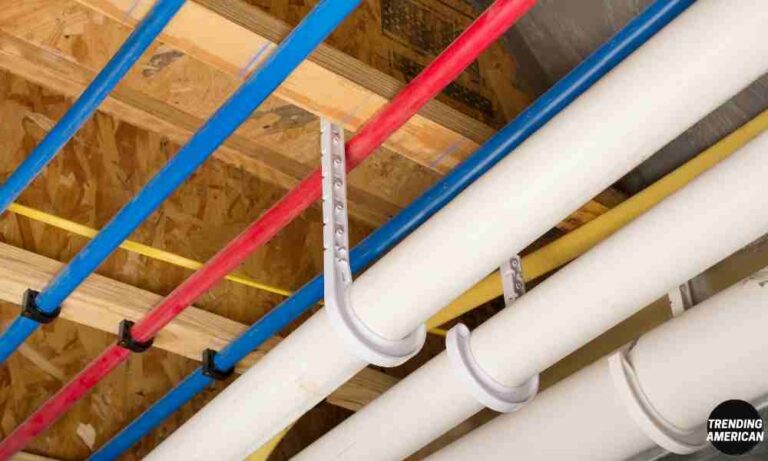How to Stretch Your Ears
Ear stretching, when done right, is a simple, pain-free and hassle-free process. With the right accessories, it can be the coolest body modification you can have. Unfortunately, there are many preconceived notions and misguided information floating around, which can be misleading and cause individuals to follow dangerous techniques, which may have long-lasting repercussions.
This article contains a detailed guide on the practice of ear stretching, with all the information you need to stretch your ears safely, and how you can use ear tapers in order to do so. Continue reading to learn how you can stretch your ears properly and safely.
What is ear stretching
Ear stretching refers to the practice of gradually stretching out the pierced holes in the ear lobes. The hole’s size or diameter is increased gradually over time and can vary anywhere from the size of a pencil to a soda can.
It is a time-consuming task and requires care, as if you do not adopt the right practices, it can cause infection, scarring or other forms of damage. It is why BodyMods only suggests the standard practices, and the right ear tapers for the job.
The history of ear stretching
The ritual of ear stretching dates back to ancient times. Tribes and civilizations from America to Africa have been using naturally shaped organic materials like claws, shells and teeth or carved stone, wood, bones or horns.
The age-old practice is believed to enhance individuals’ beauty and is considered one of the oldest body modification practices. In 1991, German scientists discovered Otzi, the Ice Man, a frozen mummy dating back to 3300 BCE. The mummy had tattoos on its back, ankles and knees and had stretched ear lobes with holes as wide as 8mm (0 gauge).
Ear stretching is a popular cultural practice among the Masai of Kenya and the Huaorani of the Amazon. They have been stretching their ears to alter their appearance and enhance their beauty for centuries.
The process would begin at an early age so that the piercing size would increase over time. Sometimes, when the piercing would reach the desired size, the individuals would abandon the plugs and maintain a natural look.
Ear stretching today
Ear stretching has become a worldwide practice today. The Masai and Huaorani may have abandoned some of their traditions, but the practice of stretching ears has gained universal popularity with the addition of modern influences, practices and tools and has become a massive trend.
With time, it is becoming more socially acceptable practice, and people of all ages and genders are opting for piercings and ear stretching. Jewelers worldwide are crafting tools in different shapes, sizes and materials as modern technology have paved the way for a world of new prospects.
Ear tapers are a popular choice for ear stretching, and you may find a wide variety at BodyMods. But more on that later! Let’s learn about the process of ear stretching.
The process of ear stretching- getting started
The first step of ear stretching is ear piercing. The piercing must not be very close to the edge of the earlobe. You can easily get it done from a licensed place like BodyMods. Avoid getting it done from a random place as there is a risk of HIV, hepatitis or other diseases if they do not use clean equipment or follow the right technique.
Once you get the piercing done, let it heal for some time. The recommended waiting period is two months, but some suggest you wait even longer. Once your ear piercing is fully healed, it is time to stretch. Remember, patience and care are the key.
Ear tapers
There are different methods of ear stretching, this article will be talking about using ear tapers. Tapers are long, spiky, tapered tools inserted into piercings to stretch out the skin. Ear tapers come in various gauges or sizes, and you need to pick one depending on how much you want to stretch your ear piercing. The size of the ear taper mentioned is its maximum diameter.
Tapers also come in different materials, however, BodyMod’s recommends using ear tapers made out of titanium, steel or Lucite, a high-grade acrylic. Avoid using tapers made of unknown materials, low-quality plastic, wood or stone, as they may irritate the ears or even slow down your healing process. Some materials have porous surfaces and can scratch, making the environment conducive for bacteria to grow and cause infections. Once your piercing is healed, you may opt for other materials.
Ear tapers are commonly available in four basic styles:
- Straight tapers
- Curved tapers are similar to straight tapers but curved at the end
- Crescent tapers or pinchers taper at both ends. They have a semi-circle shape and are more abrupt at stretching than other styles.
- Spiral tapers, as the name suggests, are spiral in shape
BodyMods features a wide range of ear tapers of various sizes and designs. You can check out the entire collection here.
Ear Stretching with ear tapers
Once you are sure that your piercing is fully healed and there is no swelling, itching or discharge, it is time to start stretching. Here is what you need to do.
- Get your skin warmed up first by taking a hot shower or pressing a hot compress to the piercing. This will increase the blood flow to the ear.
- Wash your hands thoroughly with soap and water and soap and sterilize all your equipment with rubbing alcohol to rule out the risk of infection.
- Apply a lubricant to your piercing, and the ear taper thoroughly. You can get StretchAide here.
- Now push the ear taper through the piercing hole and insert the thinner side of the ear taper into the piercing first.
- Stop when you feel resistance. Remember to go slowly; if you feel discomfort, it implies that you have pushed too far. You may not be able to push the taper fully through. Do not worry; it is all part of the process and requires patience on your end.
- Put an o-ring at the end of the ear taper and give it time to heal.
Once your piercing has healed and there is no redness or swelling, you can repeat the process. You can continue to repeat this process until you have reached your desired size for ear stretching. You can continue to wear ear tapers once your piercing is healed or put tunnels or plugs. It is time to experiment and see what looks more aesthetic from a visual perspective. You can even opt for jewelry fashioned out of wood or stone.
Care instructions for during and after ear stretching
Do not stretch your ears too much or too fast, or you will end up tearing or injuring your ear cartilage. The phenomenon is referred to as a blowout and can cause permanent scarring.
During the stretching process, wash your ear piercing at least twice daily with water and soap. You can also soak the earlobes in warm water with a little salt twice daily. To facilitate healing and keeping the lobe moisturized, it is recommended to use any safe oil like coconut or jojoba to massage the earlobes.
Ensure that your piercing is clean, and avoid touching it with unclean hands. Keep a close eye on your piercing for any redness or swelling, and only move to the next gauge when you are sure your piercing has healed. The usual waiting period is six weeks, but it may take longer.
Once the taper is in, avoid getting the piercing caught, stuck or pulled. You may notice a little odor, but it is common and caused by dead skin cells which cannot be removed during the ear stretching process.
However, if the condition aggravates or persists, seek medical care. You may also want to seek medical care if you notice any green or yellow discharge, fever, painful swelling, a swollen lymph node or bleeding from the pierced area.






